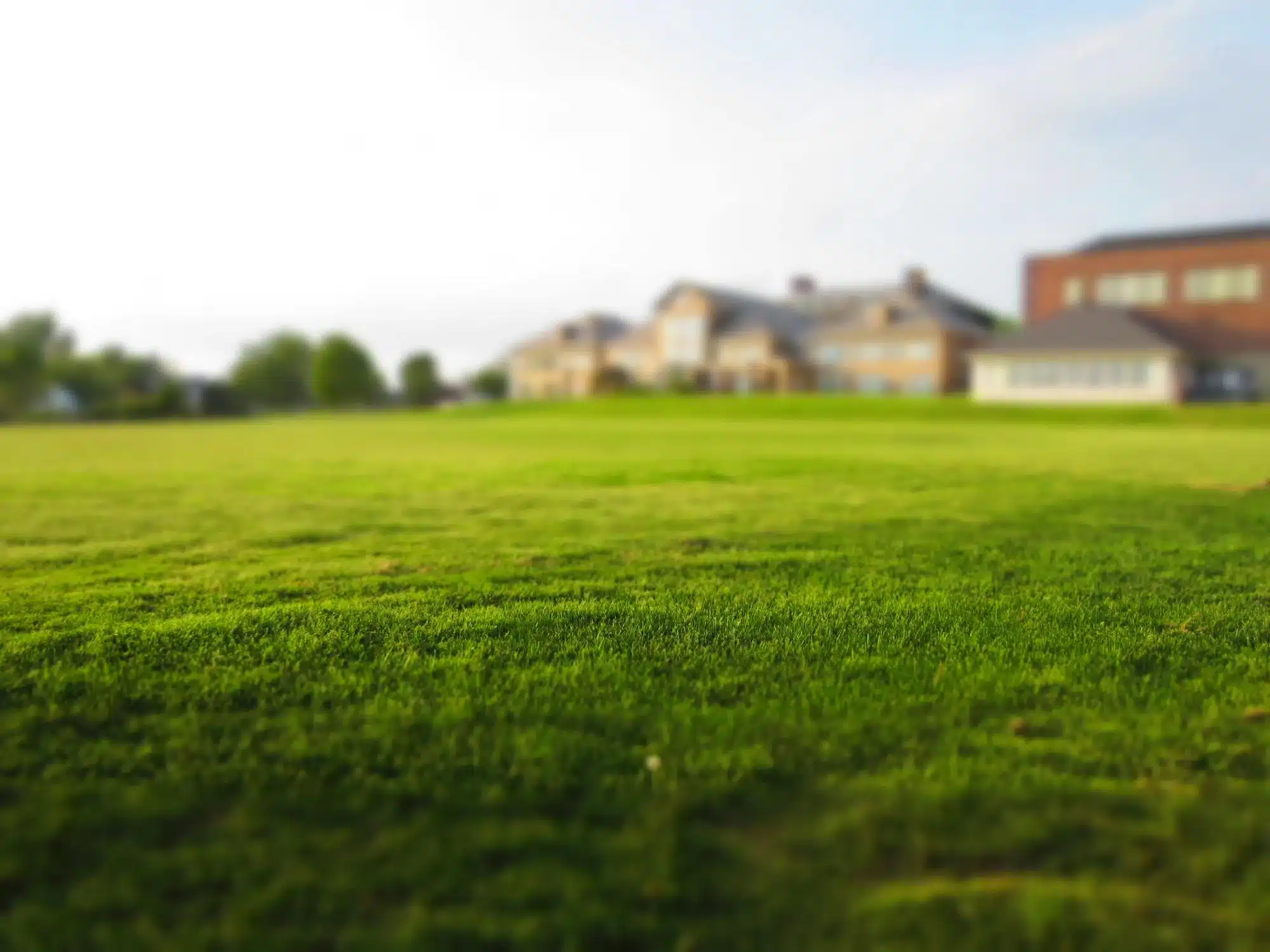Call us at 855-464-8873 or Schedule a Consultation
Lately, artificial turf has become the main landscaping material, especially in city parks, private gardens, playgrounds, and athletic fields.
These synthetic surfaces offer durability and low maintenance, making them an attractive alternative to natural grass. However, the rapid growth in their use has made people question: “Is artificial turf toxic?”
The main health concerns are from the materials used in lower quality and older artificial turf, such as plastic grass blades, crumb rubber, and volatile organic compounds (VOCs).
These substances may enter the body through inhalation, skin contact, or ingestion, and they are particularly harmful to children and athletes who spend significant time on these surfaces.
However, as you will see, high-quality products, such as those offered by ProGreen, are non-toxic and more eco-friendly.
Synthetic turf often contains chemicals such as polycyclic aromatic hydrocarbons (PAHs), which are usually found in rubber infill. Due to their toxic, carcinogenic, and mutagenic properties, PAHs pose a health risk.
Secondly, PFAS chemicals (per- and polyfluoroalkyl substances), also known as “Forever Chemicals” because they don’t break down in the environment, are a class of manmade chemicals also used to make synthetic turf.
That being said, at ProGreen we have several product lines featuring organic and biodegradable infill materials, recycle the plastic components, and make sure all our synthetic turf is certified PFAS safe per EPA-1633 and non-toxic.

It’s inevitable for children to be exposed to artificial turf since it’s practically everywhere. From playgrounds to sports fields, children often come into contact with it.
The problem is that they are more vulnerable to potential hazards, not only due to their frequent exposure but also because of their developing bodies and increased sensitivity to toxins.
That’s why our PlayDF Turf is certified PFAS safe per EPA-1633, lead-free, and officially IPEMA-certified to ASTM F1292, which helps cushion falls, as per ASTM requirements.
Although organizations such as the EPA, CPSC, and the Synthetic Turf Council have undertaken studies and offered recommendations to help prevent any health risks.
The EPA research indicates that typical exposure levels present minimal short-term risks for children and athletes who regularly interact with these materials.
The CPSC has declared certain artificial turf systems “safe for play”, and The Synthetic Turf Council promotes the advantages of artificial turf in terms of water and energy conservation.
With growing concerns about chemical exposure and environmental impacts many are turning to sustainable innovations such as coconut fiber and cork infill as healthier and more eco-friendly alternatives.
These natural and biodegradable materials are the basis of ProGreen’s “coconut” infill used in our CoolPlay system which offers durability and cushioning while greatly minimizing the risks of chemical exposure. Other eco-friendly options include silica sand.
In contrast, natural grass fields can contain potentially harmful chemicals from various insecticides and herbicides, as well as allergens.
Many studies claim that synthetic turf fields with crumb rubber infill have been done to date. For example, a study in Connecticut examined emissions from four outdoor and one indoor field during summer, identifying over 20 chemicals of potential concern.
However, the risk assessments indicated that cancer and noncancer risks were at or below levels of minimal concern. As for products with organic infill or sand, there is no concern as long as the artificial turf fields don’t contain high levels of PFAS chemicals and similar toxic chemicals found in lower-grade materials.
Despite these findings, there is limited research on the long-term health outcomes of artificial turf exposure.

Artificial turf made from synthetic grass blades, crumb rubber infill (often made from recycled tires), synthetic rubber, and other layers may raise some health and environmental concerns.
That is why ProGreen uses high-grade materials that don’t contain polycyclic aromatic hydrocarbons (PAHs), “Forever Chemicals”, Carbon black, or any other chemicals that are which are toxic, carcinogenic, mutagenic or cause respiratory issues.
In fact, studies show that most exposures to artificial turf chemicals are below regulatory safety thresholds. Artificial turf also offers benefits such as reduced water and pesticide use and consistent playability in various weather conditions, making it a favorable alternative to natural grass.
The benefits of artificial turf are undeniable. However, there are potential risks from materials like crumb rubber infill and lower-quality synthetic fibers that contain chemicals such as PFAS and carbon black. Luckily, ProGreen uses only the highest quality US-made materials, as we handle everything from production to installation.
It is really worth considering a safer, eco-friendly turf infill made from coconut fibers and cork since it provides similar benefits while reducing chemical risks. Moreover, asking manufacturers about the safety standards and materials used in their products can help ensure that the chosen options are healthy and safe.
With the rise in popularity of artificial turf, it’s essential to know what’s best for you and your environment. ProGreen is committed to providing you with the information you need to make informed decisions about artificial grass for your environment and expert guidance on turf installation, materials, and eco-friendly options.
Whether you’re considering artificial turf for its convenience or low maintenance, it’s important to make sure that the materials used are safe for your family, pets, and the environment. Contact ProGreen today to discover more about synthetic turf materials, safety guidelines, and environmentally friendly solutions.
Contact ProGreen today to restore your lawn to perfection after the storm.